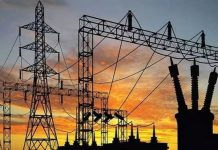DM Monitoring
WASHINGTON: U.S. job growth likely slowed further in September as the recovery from the COVID-19 slump shifts into lower gear amid diminishing government money and a relentless pandemic, leaving many at the risk of being permanently unemployed.
The Labor Department’s closely watched employment report on Friday will be the last before the fiercely contested Nov. 3 presidential election for which the economic blow from the pandemic has been a top issue. Republican President Donald Trump is likely to see the fifth straight month of job gains as a sign of progress for an economy that plunged into recession in February.
But September’s anticipated employment gains would be the smallest since the jobs recovery started in May and would still leave the labor market a long way from recouping the 22.2 million jobs lost in March and April. Former Vice President Joe Biden, the Democratic Party nominee, blames the economic turmoil on the White House’s handling of the pandemic, which has killed more than 200,000 people and infected over 7 million in the nation.
“The recovery continues but at slower rate in part because the government stimulus has diminished significantly,” said Sung Won Sohn, a finance and economics professor at Loyola Marymount University in Los Angeles.
“We are seeing more layoffs and bankruptcies, and until the next government comes in with more support, I would not be surprised to see a renewed decline in employment toward the end of the year.” According to a Reuters survey of economists nonfarm payrolls likely rose by 850,000 jobs last month after increasing 1.371 million in August amid the hiring of nearly a quarter million workers for the 2020 Census. That would leave employment 10.7 million below its level in February.
Though payrolls have beat forecasts over the past months, that has not changed the narrative of slower growth heading into the fourth quarter. Employment growth peaked in June when payrolls jumped by a record 4.781 million jobs. Third-quarter gross domestic product growth estimates are topping a 32% annualized rate, reversing a historic 31.4% pace of contraction in the April-June quarter. Growth estimates for the fourth quarter have been cut to around a 2.5% rate from above a 10% pace.
House of Representatives Speaker Nancy Pelosi, a Democrat, and Treasury Secretary Steven Mnuchin are working toward a bipartisan agreement for another rescue package for businesses and the unemployed.
New coronavirus cases are rising, with a surge expected in the fall, which could lead to some restrictions being imposed on businesses in the services sector. Political uncertainty is rising and could extend beyond the election, and make businesses cautious about hiring.
Several months after operations resumed, demand has remained poor, especially in the services sector, leading some businesses to permanently shut down or lay off more workers.
Walt Disney Co. said this week it would lay off roughly 28,000 employees in its theme parks division. American Airlines and United Airlines, two of the largest U.S. carriers, said they were beginning furloughs of more than 32,000 workers on Thursday, absent additional government assistance.





